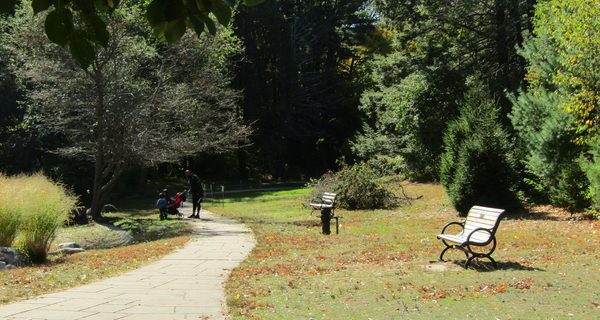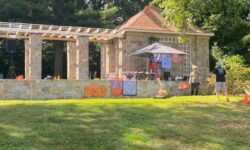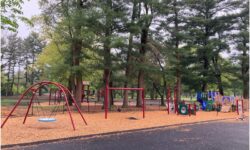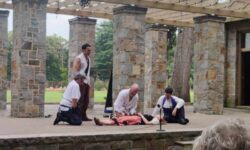By Amelia Tarallo
Hometown Weekly Staff
Every so often, I’m sent to Bird Park in Walpole to cover an event or activity. Each time, I’m amazed at the openness of the grounds and relief I feel at seeing the huge wide-open field, paved paths, and wooded trails that make up the park. There’s something for everyone located on 89 acres of land in the middle of Walpole. But while I always get wrapped up in the moment while I'm there, I’m also often intrigued by whatever was here before - or rather, what I’m not actually seeing.
It’s a lesson I learned during a history class when I was in college. My professor had us look at a painting, one of the largest in my college art museum. It was called "Hetch Hetchy Canyon,” in which painter Albert Bierstadt depicted a scene of the wilderness that would soon become part of Yosemite National Park. What Bierstadt neglected was that this space wasn't uninhabited at all. It was the home of Native Americans who had settled centuries beforehand. There’s always something we’re not seeing. It is one of the reasons I returned to Bird Park on Sunday, October 10, to walk the First People Trail in honor of Indigenous People’s Day.
The self-guided tour began close to the Washington Street entrance of the park, across from the frog pond. As always, I began this trip with a slightly rocky start and parked in the Polley Lane lot, which forced me to take a few extra minutes to walk over - and, frankly, to enjoy the park at the height of autumn. Along the way, I spotted people sitting in the wide-open field, watching as their kids played, couples walking their dogs, and even a tour group making its way through the park.
The start of the tour began with an informational post about Bird Park 20,000 years ago, when a mile-high glacier stretched from the Arctic to Cape Cod. “By 11,000 years ago, the first people arrived, taking advantage of the many resources this area has to offer,” it noted, including a small depiction of people hunting a woolly mammoth.
The second post continued with this history, noting life 3,500 years ago, including social changes and the environment’s stabilization. “The First People who settled here, fished in the Neponset River, and had planting fields here did so for thousands of years. The descendants of the First People in this area are known as the Massachusett,” it said. This was, of course, long before Charles Sumner Bird thought of Bird Park. The next post continued the history of the native population before the arrival of Europeans. It explains that the Confederation of Indigenous Massachusett lived and thrived in villages spanning from Salem to Cape Cod, and as far inland as Worcester. “They planted vast fields of corn, squash, and beans, harvested, stored, celebrated, practiced their religion, built their homes, raised their families, and enjoyed prosperity,” noted the post. It’s hard to imagine a property like Bird Park ever being a settlement like that.
As I walked, I realized that the grim information was coming up about what plagued the Native Americans. “European traders traveled throughout New England trading goods with the indigenous tribes. They brought diseases with them that were deadly to the indigenous people who had no immunity. These new diseases, including smallpox, which was the most devastating, became plagues that traveled throughout the region, devastating tribes and drastically reducing their numbers,” said the next sign. I continued reading and discovered that 90 percent of the Native population died as a result of illnesses like smallpox. Just a few steps away, the next post contained horrific quotes from different non-Native leaders about how what they referred to as “Great Dying” was good for the settling of European colonies.
The connection between Bird Park and the population of First People was explained in one of the following posts. As it turns out, the land between Bird Park and the Neponset River was set aside by Wampatuck, a leader of the Massachusett people, for hunting grounds. The post quotes the Dedham Historical Register about the creation of the land and its purpose: “Puncapogg Indians shall have full and free Liberty of Hunting according to Law within the precincts of Dedham affores.”
The short walk ended with a reminder for all who had taken the time to read the different posts: “The Massachusett are still here.” The post provided information about the tribal government that now governs the tribe. While the walk seemed a bit out of place beside a popular walking path, it served as a poignant way to inform all passers-by: the Massachusett, who once lived on the very land Bird Park sits on, were here for years before European settlers - and are still very much around today.






















